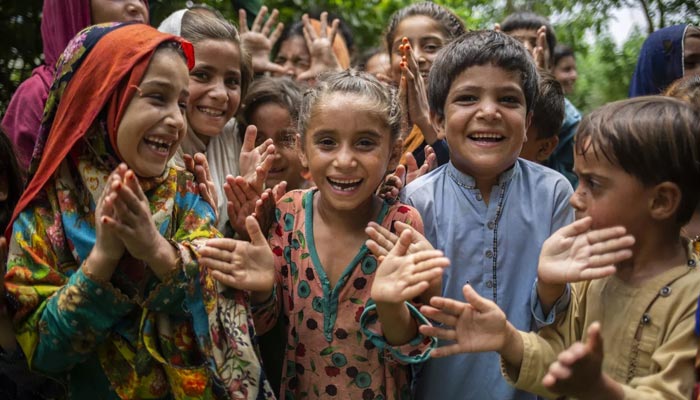
Demographic shifts, worsening climate change and rapid technological transformation threaten to create a bleak future for young people in the mid-21st century, the United Nations Children’s Fund (UNICEF) warned Tuesday in an annual report.
“Children are suffering from a myriad of crises, from climate shocks to online dangers, and these crises are set to intensify,” Catherine Russell, Executive Director of the United Nations Children’s Fund (UNICEF), wrote in a statement marking the 30th anniversary of Childhood. In the coming years.” Issuing the agency’s annual report.
“Decades of progress, especially for girls, are under threat.”
The United Nations children’s agency released the report one day before Universal Children’s Day.
This day is celebrated every year on November 20 since 1954 when the United Nations designated this day to promote international togetherness and awareness among children around the world and improve the well-being of children.
This year, UNICEF is using its report to look ahead to 2050 and identify three “key trends” that, in addition to unpredictable conflicts, pose threats to children unless policymakers make changes.
The first risk is demographic change, as the number of children is expected to remain similar to the current 2.3 billion, but they will represent a smaller share of the larger and aging global population of about 10 billion.
While the proportion of children will decline in all regions, their numbers will explode in some of the poorest regions, especially in sub-Saharan Africa.
UNICEF points out that this offers the potential to boost economic growth, but only if new youth have access to quality education, health care and jobs.
In some developed countries, children could make up less than 10% of the population by 2050, raising concerns about their “visibility” and rights in societies focused on aging populations.
The second threat is climate change.
UNICEF projections indicate that if current trends in greenhouse gas emissions continue, by 2050 children could face eight times more heatwaves than in 2000, three times more severe floods, and 1.7 times more wildfires.
New technology, especially artificial intelligence, has the potential to stimulate new innovation and progress, but it can also widen existing inequalities between rich and poor countries.
It is estimated that 95% of people in developed countries have access to the Internet, compared to only 26% in less developed countries, often due to lack of electricity, connectivity or devices.
According to UNICEF, “Failure to remove barriers for children in these countries, especially those living in the poorest households, means allowing an already disadvantaged generation to fall behind.”
Communication also carries risks. The unlimited proliferation of new technologies poses threats to children and their personal data, making them vulnerable to online predators.
“Children of the future face many risks, but what we wanted to show is that the solutions are in the hands of decision makers today,” said Cécile Aptell, UNICEF Deputy Director for Research. Agence France-Presse.
